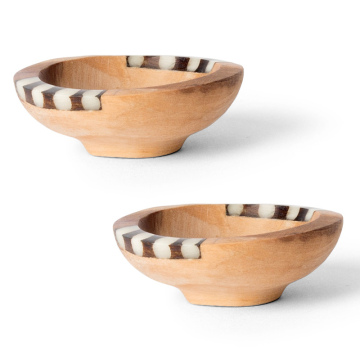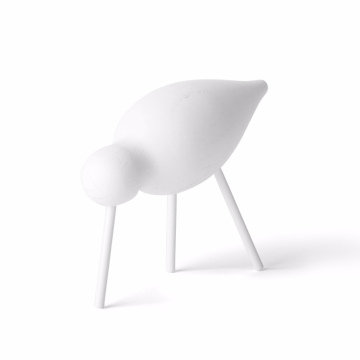From Batter to Bliss: Discovering Japan's Tempura Magic
The Origins of Tempura: A Culinary Journey
Tempura, a dish renowned for its light and crispy batter, boasts a fascinating history that intertwines with the cultural exchange between Japan and Portugal. The origins of tempura can be traced back to the 16th century when Portuguese missionaries and traders arrived on the shores of Japan. They brought with them a method of cooking that involved battering and frying seafood and vegetables, a technique that resonated with the Japanese culinary ethos.
As this frying technique made its way into Japanese kitchens, it adapted to local ingredients and flavors. The Japanese embraced the concept of tempura, incorporating seasonal vegetables and fresh seafood that were abundant in coastal regions. This adaptation allowed tempura to flourish, leading to the creation of dishes that reflected Japan's unique agricultural practices and the local climate. Over time, the culinary attributes of tempura evolved into what is now considered a classic element of Japanese cuisine.
The cultural significance of tempura extends beyond its delectable taste. Initially viewed as a foreign concept, it gradually became ingrained in Japanese dining traditions. By the Edo period, tempura gained popularity in urban centers, with specialty shops emerging that solely focused on this dish. These establishments contributed to the refinement of tempura, ensuring the preparation of the batter remained light and the frying process managed to retain the natural flavors of the ingredients.
Today, tempura stands as a beloved national dish, celebrated not only for its exquisite crunch and flavor but also for its embodiment of the fusion between foreign techniques and Japanese culinary creativity. The journey of tempura from foreign influence to a staple of Japanese cuisine illustrates the dynamic nature of food and culture. This remarkable transformation highlights how culinary practices can transcend origins, ultimately becoming integral to a nation’s identity.
The Art of Tempura: Techniques and Ingredients
Tempura, a quintessential Japanese dish, is celebrated for its light, crisp exterior and the delicate flavors of its ingredients. The preparation of tempura requires a thoughtful selection of both techniques and ingredients, which work in harmony to elevate this dish into an art form. The foundation of tempura lies in its batter, made from a blend of cold water and flour, where maintaining the optimal consistency is paramount. A thinner batter allows the natural ingredients to shine, while a thicker batter can detract from the intended lightness.
The type of flour used also plays an important role in achieving that desired texture. Many chefs advocate for the use of white flour combined with a small portion of rice flour or cornstarch, as these ingredients help to enhance the crispiness once fried. Furthermore, the temperature of the water is crucial; the usage of ice-cold water slows down gluten development, contributing to the tempura's characteristic fluffiness.
When selecting ingredients, seasonal vegetables and fresh seafood are preferred to ensure the best flavors. Common vegetables include sweet potatoes, zucchini, and bell peppers, while shrimp and fish like cod or snapper are frequently utilized seafood choices. The adoption of seasonal ingredients not only highlights the fresh produce available but also aligns with the Japanese culinary philosophy of celebrating nature's offerings at their peak.
Another critical aspect of tempura preparation is the frying technique. Using clean, high-quality oil is essential, along with maintaining a consistent frying temperature around 180°C (350°F). This temperature allows the batter to form a perfect golden color without absorbing excessive oil. Professionals often recommend frying in small batches to prevent a drop in oil temperature, ensuring every piece reaches that sought-after crispiness.
Ultimately, mastering the art of tempura involves a combination of precise techniques and quality ingredients, which together create an exceptional culinary experience that is both visually appealing and flavorful.
Tempura in Modern Japanese Cuisine: Variations and Innovations
Tempura, a traditional Japanese dish of battered and deep-fried vegetables and seafood, has undergone significant transformations in modern Japanese cuisine. As culinary boundaries blur, tempura has not only maintained its historical roots but also embraced a wide array of regional variations and innovative adaptations. Chefs are now exploring creative combinations, incorporating local ingredients and employing contemporary cooking techniques that elevate this beloved dish.
One notable trend in modern tempura is the use of seasonal and regional produce, which allows chefs to showcase the flavors inherent to their locations. For example, in areas like Hokkaido, chefs often utilize fresh seafood, leading to unique iterations that highlight local catch. Other regions might favor vegetable tempura, showcasing seasonal greens, mushrooms, or even wild plants, thus reflecting Japan's ethos of harmony with nature through food.
Furthermore, the influence of Western cuisine has propelled tempura to new heights. Chefs experiment with fusion dishes by combining tempura with non-traditional ingredients like avocado or even using alternative flours such as quinoa for the batter. This creates not only diverse flavor profiles but also invites a fresh aesthetic appeal. The introduction of novel cooking methods, such as air frying, has also allowed for healthier versions of tempura, appealing to a growing health-conscious demographic.
Several acclaimed tempura restaurants in cities like Tokyo and Osaka have made a name for themselves by presenting unique takes on this classic dish. Places like Tempura Kondo offer a multi-course tasting menu where customers can experience an array of expertly crafted tempura, served in imaginative ways that reflect both tradition and modernity. Food enthusiasts seeking an authentic yet innovative tempura experience are encouraged to explore these culinary treasures that beautifully showcase the evolving world of tempura.
Experiencing Tempura: Tips for Enjoying and Pairing
To fully appreciate tempura, it is essential to understand the traditional serving styles and accompanying elements that enhance its exquisite flavors. Typically, tempura is presented with a light sprinkle of salt or a flavorful dipping sauce called tentsuyu, which consists of dashi, soy sauce, and mirin. While enjoying tempura, one can experiment with adjusting the amount of dipping sauce to find a balance that complements the dish without overpowering its delicate taste.
When it comes to beverages, pairing tempura with sake or green tea can elevate the dining culinary experience. The crisp taste of tempura complements the umami notes of sake, enhancing the overall flavor profile. Alternatively, sipping on a warm cup of green tea can cleanse the palate between bites and accentuate the tempura's subtle characteristics. For those who prefer non-alcoholic options, a refreshing iced matcha works wonderfully as well.
Tempura etiquette is another aspect that diners should consider. It is customary to eat the tempura with chopsticks rather than using your hands. Additionally, it is recommended to enjoy the tempura shortly after it is served, as it is meant to be consumed hot and crispy. Dip each piece lightly into the sauce before taking a bite to fully appreciate its distinctive texture and taste.
For those traveling in Japan, seeking authentic tempura spots can be an adventure in itself. Look for establishments that specialize in tempura, often indicated by a dedicated sign or menu. Alternatively, consider exploring local markets or stalls where tempura is freshly prepared on-site, offering an immersive culinary experience. If you are inclined to make tempura at home, selecting fresh, seasonal ingredients is key. Utilize a light batter and monitor the frying temperature to achieve that perfect union of crunch and flavor.





